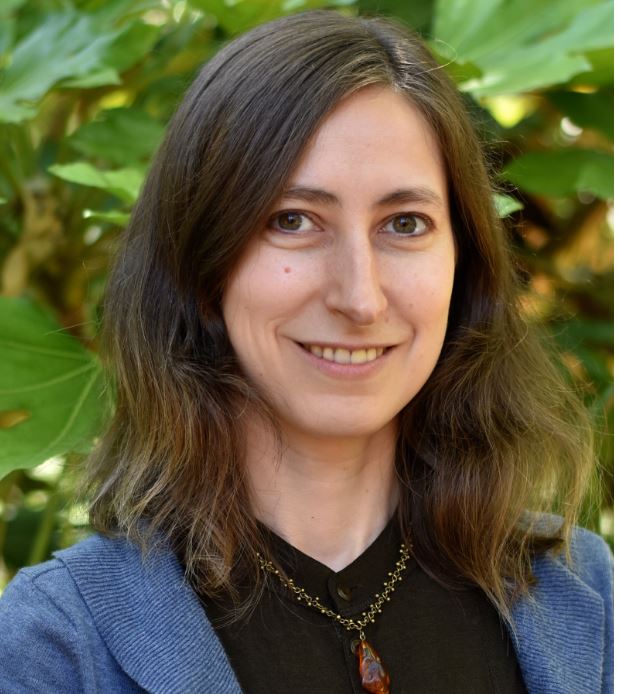Dr. Razorenova Reflects on Nobel Award Announcement
Last week, the prestigious 2019 Nobel Prizes for contributions to science were announced. A link to the Nobel Foundation is here. The Prize for Physiology or Medicine went to William G. Kaelin Jr., Sir Peter J. Ratcliffe and Gregg L. Semenza for their work and discoveries that have led to our deep understanding of the processes by which all types of cells are able to sense and respond to the level of oxygen in their environment.
One of our rising research stars in the UCI Sue & Bill Gross Stem Cell Research Center, Dr. Olga Razorenova, also works in this field. Her laboratory is conducting research into the ways that these oxygen-sensing cellular signaling pathways contribute to the aggressive behavior of breast and kidney cancer stem cells.
Here is her reaction to the Nobel Prize award announcement:
 As a researcher in the oxygen-sensing field, I am extremely excited about the 2019 Nobel Prize in Physiology or Medicine. I worked with the leader in the field—Amato Giaccia—at Stanford as a postdoctoral fellow and his contributions to the field of low oxygen (hypoxia)-mediated tumor metastasis are remarkable.
As a researcher in the oxygen-sensing field, I am extremely excited about the 2019 Nobel Prize in Physiology or Medicine. I worked with the leader in the field—Amato Giaccia—at Stanford as a postdoctoral fellow and his contributions to the field of low oxygen (hypoxia)-mediated tumor metastasis are remarkable.
The amount of oxygen present, measured as oxygen tension, is very important for cellular function and is critical for proper organism development, especially at early stages when blood vessel networks are forming. Disturbances in oxygen tension are associated with serious diseases such as stroke and cancer. This importance extends even to research using cultured cells on Petri dishes in vitro: while most laboratories culture cells at 21% atmospheric oxygen, this is far from normal - tissues in our body are exposed to 4-16% oxygen, reaching 16% in the most oxygenated tissue: lung.
Because cultured cells are used as models to test new therapeutics to rescue cells (for example in the case of injury), or kill cells (for example in the case of cancer), understanding the role of oxygen tension is critical to effective and accurate therapeutic screening. This Nobel Prize raises additional awareness in the research community about this issue. Indeed, embryonic stem cells maintain an undifferentiated state and proliferate better in low oxygen than in atmospheric oxygen. In this respect, Dr. Razorenova’s recent experiments, in collaboration with Dr. Sharon Gerecht (John Hopkins University), show that hydrogels engineered to consume oxygen (lowering oxygen in the 3-dimensional environment) dramatically improved the ability of kidney cancer cells isolated from patient-derived xenografts to form 3-dimensional structures and proliferate, which will facilitate therapeutic discovery in vitro.
Q&A with Dr. Razorenova:
Q: As a young scientist while your career was in development, did you know of or meet any of these scientists, and if so, how did their work influence your career trajectory?
I entered the field of oxygen sensing at graduate school, shortly after hypoxia-inducible factor (HIF) was discovered, so I was in the field pretty much my whole scientific life. I remember Gregg Semenza giving an exciting lecture at Case Western Reserve University in Cleveland during that time. Once I relocated to Stanford as a postdoctoral fellow, I became a regular attendant of a Keystone “Hypoxia” conference, where all three Nobel Laureates regularly presented their work, which allowed me to learn in-depth about the field, get new ideas for my research and ask them questions. They truly set the high standards for the field and inspired many scientists, including myself.
Q: You mentioned stroke and cancer as specific conditions that are impacted by these normal oxygen-sensing mechanisms, or disruption of these pathways. What are the possible treatments or cures that are being developed based in and around this field of knowledge?
The stroke is caused by blockage of the blood vessel, which results in no oxygen being delivered to a corresponding tissue. The lesson we learned for stroke is that acting fast to surgically restore the blood flow is the key to reduce tissue damage and associated pathology. Tumors have multiple regions where tumor cells are exposed to low oxygen, which makes them invasive, metastatic, and resistant to radiation. Several classes of therapeutics were recently developed to kill tumor cells in the low oxygen environments, including prodrugs which become cytotoxic only in low oxygen environment, as well as drugs targeting hypoxia inducible factors (HIFs), to name a few. The field is rapidly developing and novel ideas for therapeutic development are constantly being generated.
Q: How inspiring is it for you that the Nobel Prize has been awarded in your field of interest?
Very much! I think the Nobel Prize highlights the most important discoveries and makes every researcher in the field proud to be a part of the bigger picture. I expect that the field will continue attracting talented scientists and we will see a lot of novel groundbreaking research with therapeutic implications in the next decade.